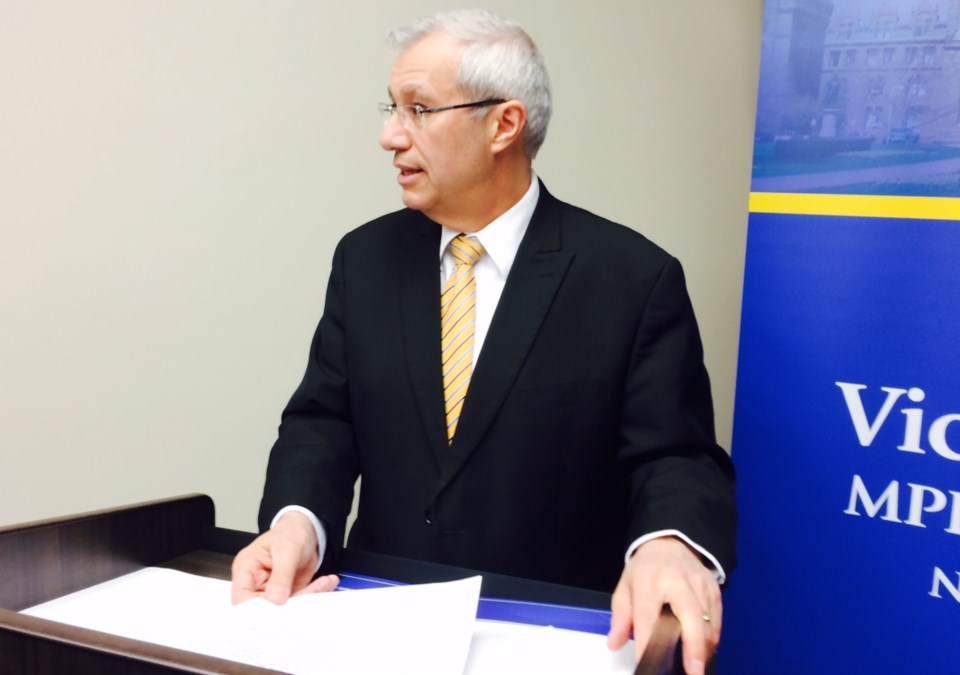This evening, Premier Doug Ford unveiled his new cabinet, and it's a big one.
“As our province and economy continue to grow, this is the team that is working side-by-side with workers, businesses, labour partners, Indigenous leaders, and every member of Team Ontario to rebuild our economy,” said Ford. “We’re at an important moment in our province’s history with clear choices. Our team is choosing growth and prosperity. We’re choosing lower taxes and better jobs with bigger paycheques. Let’s Get it Done!”
Cabinet now includes the following ministers:
- Premier Doug Ford remains Minister of Intergovernmental Affairs
- Sylvia Jones remains Deputy Premier and Minister of Health
- Peter Bethlenfalvy remains Minister of Finance
- Paul Calandra remains Minister of Municipal Affairs and Housing
- Raymond Cho remains Minister of Seniors and Accessibility
- Stan Cho becomes Minister of Tourism, Culture and Gaming, with responsibility for OLG
- Doug Downey remains Attorney General
- Jill Dunlop remains Minister of Colleges and Universities
- Vic Fedeli remains Minister of Economic Development, Job Creation and Trade
- Rob Flack becomes Minister of Farming, Agriculture and Agribusiness
- Michael Ford remains Minister of Citizenship and Multiculturalism
- Mike Harris becomes Minister of Red Tape Reduction
- Michael Kerzner remains Solicitor General
- Andrea Khanjin remains Minister of Environment, Conservation and Parks
- Natalia Kusendova-Bashta becomes Minister of Long-Term Care
- Stephen Lecce becomes Minister of Energy and Electrification
- Neil Lumsden becomes Minister of Sport
- Todd McCarthy becomes Minister of Public and Business Service Delivery and Procurement, with responsibility for Supply Ontario
- Caroline Mulroney remains President of the Treasury Board and Minister of Francophone Affairs
- Michael Parsa remains Minister of Children, Community and Social Services
- David Piccini remains Minister of Labour, Immigration, Training and Skills Development
- George Pirie remains Minister of Mines
- Greg Rickford becomes Minister of Indigenous Affairs and First Nations Economic Reconciliation and remains Minister of Northern Development
- Prabmeet Sarkaria remains Minister of Transportation
- Todd Smith becomes Minister of Education
- Graydon Smith becomes Minister of Natural Resources
- Kinga Surma remains Minister of Infrastructure
- Lisa Thompson becomes Minister of Rural Affairs
- Stephen Crawford becomes Associate Minister of Mines as part of the Ministry of Mines
- Trevor Jones becomes Associate Minister of Emergency Preparedness and Response as part of Treasury Board Secretariat
- Sam Oosterhoff becomes Associate Minister of Energy-Intensive Industries as part of the Ministry of Energy and Electrification
- Nolan Quinn becomes Associate Minister of Forestry as part of the Ministry of Natural Resources
- Nina Tangri remains Associate Minister of Small Business as part of the Ministry of Economic Development, Job Creation and Trade
- Vijay Thanigasalam becomes Associate Minister of Housing as part of the Ministry of Municipal Affairs and Housing
- Michael Tibollo remains Associate Minister of Mental Health and Addictions as part of the Ministry of Health
- Charmaine Williams remains Associate Minister of Women’s Social and Economic Opportunity as part of the Ministry of Children, Community and Social Services
In addition, outside of Cabinet, Steve Clark has been appointed Government House Leader.
Meanwhile, the Canadian Taxpayers Federation is criticizing Ford for once again expanding the size of the provincial cabinet with his latest cabinet shuffle.
“The Ford gravy train just keeps taking on more cargo with this ridiculously oversized cabinet,” said CTF Ontario Director Jay Goldberg. “Ford has handed Ontario taxpayers the most expensive cabinet in Ontario history with 36 members. Today’s cabinet is 15 members larger than the one Ford first appointed when he became premier just six short years ago.”
Ford added five new members to cabinet on June 5.
The Ford government now has a total of eight associate ministries, with each junior minister reporting to a senior counterpart. Because junior ministries are created within larger ministries, these cabinet positions are redundant says the association.
“Ford should have used this shuffle as an opportunity to streamline the government and show taxpayers that he respects their hard-earned taxpayer dollars,” said Goldberg. “This bloated cabinet is a slap in the face to Ontarians who are struggling to pay the bills.”
Cabinet ministers in Ontario receive $165,000 in salary, which is 42 per cent more than a base MPP salary of $116,500. If Ford’s cabinet still had 21 members, Ontario taxpayers would be saving more than $700,000 on additional ministerial salary alone.
Forty-five per cent of the Progressive Conservative caucus is now in cabinet and is now the biggest in provincial history at 36 ministers
Marit Stiles, Leader of the Ontario NDP, is not impressed with Ford’s "Hail Mary" cabinet shuffle:
“Brutal. After another disastrous year of failures and scandal for Doug Ford, people are worse off. Ford is taking a 19-week extended vacation and giving more of his MPPs a raise in the biggest cabinet in provincial history while people struggle to find a home, get a doctor, and make ends meet. It’ll take more than musical chairs at the cabinet table to fix this government.”
The premier kicked off a round of early-election speculation earlier this month when he repeatedly declined to rule out going to the polls before the next scheduled election date in June 2026. He later ruled out calling one this summer or fall but declined again to rule out a contest in 2025.
